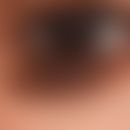HistoryThis section has been translated automatically.
Wollaston first described a cystine stone excreted in the urine in 1810 (Hoffmann 2014). In 1817, Marcet was the first to chemically examine a kidney stone. This consisted of pure xanthine (Opitz 1965).
ClassificationThis section has been translated automatically.
One differentiates with urinary stones between the following types:
1. calcium stones: in calcium stones, the pH of the urine plays a major role: at low pH calcium oxalate stones form, at high pH calcium phosphate stones (Kuhlmann 2015).
Hypercalciuria (from > 5 mmol / d, metaphylaxis is justified) can occur due to:
- absorptive hypercalciuria (due to increased enteral reabsorption)
- resorptive hypercalciuria (is the result of an increased mobilization of calcium from the bones in e.g. ankylosing spondylitis, immobilization, osteoporosis etc.)
- Hyperparathyroidism
- renal tubular acidosis (= RTA, an autosomal dominant disease) (Herold 2020 / Seitz 2018)
1. a. Calcium- oxalate stones: Calcium- oxalate stones are divided based on mineral form into:
- Weddellite stones
- Whewellite stones (Wendt-Nordahl 2014).
The normal value of oxalate excretion in the urine is < 40 mg / d or < 0.36 mmol / d. Hyperoxaluria with subsequent stone formation can occur with:
- excessive intake of oxalate-containing foods such as rhubarb, beetroot, nuts, spinach, parsley, (dark) chocolate, wheat bran, cocoa, cola, coffee, tea, etc.
- increased enteral absorption due to e.g. conditions with malabsorption in chronic inflammatory bowel diseases
- primary hyperoxaluria (very rare, genetically determined disease) (Kuhlmann 2015).
The excretion of calcium, oxalate, citrate, creatinine, uric acid, and magnesium, among others, should also be determined in the 24 h collected urine (Seitz 2018).
If elevated albumin-corrected or ionized calcium is detectable in the baseline diagnosis, additional determination of parathyroid hormone is recommended to rule out hyperparathyroidism (Seitz 2018).
In 70% of calcium oxalate stone formers, none of the above risk factors are found. Such cases are referred to as "idiopathic stone formers" (Wendt- Nordahl 2014).
1. b. Calcium-phosphate stones: Calcium-phosphate stones are divided based on the etiology into:
- Dahllite (= carbonate apatite).
- Brushite
Dahllite / carbonate apatite stones: Does occur preferentially at high urine pH values of > 6.8 and are therefore frequently associated with an infection. For this reason, a urine culture should always be taken when carbonate stones occur. If no urinary tract infection can be detected, an ammonium chloride load test is recommended if the urine is constantly neutral or alkaline. This can be used to detect renal tubular acidosis, which can be caused, for example, by a genetic defect or acquired damage to the renal epithelial cells [Brandes 2019] and leads to impaired bicarbonate or H+ ion excretion (Wendt-Nordahl 2014) (Seitz 2018).
In brushite stones, a urine pH between 6.5 - 6.8 is found. In addition, high concentrations of calcium and phosphate are detectable in the urine. The infection association does not play a role here (Seitz 2018). Brushite stones grow rapidly, are very hard and therefore respond poorly to ESWL- treatment (Wendt- Nordahl 2014).
2. uric acid stones: Here one differentiates on the basis of their etiology between the purely uric acid stones and the ammonium urate stones.
2. a. Pure uric acid stones: Uric acid is the end product of purine metabolism. Pure uric acid stones occur preferentially in constantly acidic urine (pH < 5.8 [Seitz 2018]) and with concomitant high uric acid excretion (Kasper 2015).
The causes may be exogenous due to:
- faulty diet (e.g. a high animal protein intake) or be endogenous by e.g.:
- Hyperuricemia
- catabolic metabolic states (e.g. in metabolic syndrome)
- enzyme defects
- myeloproliferative disorders
- drugs
- Tumor lysis syndrome (Seitz 2018).
2. b. Ammonium- urate stones: Ammonium- urate stones form preferentially in a pH- range of > 6.5.
The causes of stone formation may be:
- Infection
- Malabsorption
- malnutrition
- high uric acid, vegetarian diet
Since ammonium urate stones are most commonly associated with infection, a urine culture should be obtained in any case (Seitz 2018).
3. infectious stones (e.g. struvite): infectious stones are usually mixed stones that are characterized by rapid growth (Wendt-Nordahl 2014). Infectious stones form preferentially in the alkaline range (pH > 6.5) and are formed by urease-producing bacteria such as e.g.
- Corynebacterium urealyticum
- Morganella morganii
- Proteus spp.
- Providencia rettgeri
- Ureaplasma urealyticum
and also by facultative urease formers such as:
- Enterobacter gergoviae
- Klebsiella spp.
- Providencia stuartii
- Serratia marcescens
- Staphylococcus spp. (Kaufmann 2015 / Wendt- Nordahl 2014).
Infections occur preferentially in neurogenic voiding dysfunction, benign prostatic syndrome, subpelvic stenosis, bladder diverticula, cystoceles, urethral strictures, and foreign bodies such as bladder catheters (Wendt- Nordahl 2014).
4. cy stine stones: cystinuria is caused by mutations of 2 transporters of a bibasic amino acid. The mode of inheritance is autosomal recessive. Cystine stones are exclusively caused by supersaturation of the urine with cystine. Depending on the genetically modified transporter, a distinction is made between type A, type B and type AB (Kuhlmann 2015 / Hautmann 2013).
5. rare stones such as:
- 5. a. Xanthine stones: The formation of xanthine stones occurs primarily due to a defect in xanthine oxidase. This causes an increase in the excretion of xanthine in the urine. The disease is also inherited in an autosomal recessive manner (Seitz 2018). Typically, there is increased xanthine excretion with a simultaneous significant decrease in uric acid, both in the urine and in the serum (Kuhlmann 2015). Extremely rarely, the administration of allopurinol (xanthine oxidase inhibitor) can lead to a drug-induced form of increased xanthine excretion in the urine (Seitz 2018).
You might also be interested in
OccurrenceThis section has been translated automatically.
- Calcium stones are by far the most common type of stone:
- Calcium oxalate stones are the most common of all stone types (70 % - 80 %) and occur 3 times more frequently in men than in women.
- whewellite: 60 % - 70 %
- weddellite: 10 % - 15 %
- Calcium phosphate stones are found in approx. 5 % - max. 10 % of all urinary stones
- carbonatapatite / dahllite: approx. 5 %
- brushite: approx. 1 %
- Calcium oxalate stones are the most common of all stone types (70 % - 80 %) and occur 3 times more frequently in men than in women.
- uric acid containing stones between 0,5 % - 10 %.
- pure uric acid stones ca. 10 %
- ammonium-urate stones 0,5 % - 1 %
- Infectious stones: in 5 % - 10 % (occur 3 - 5 times more frequently in women and are significantly more frequent in developing countries than in Western Europe)
- rare stones: < 1 %
- Xanthine < 0,5 % (Seitz 2018 / Wendt- Nordahl 2014)
EtiologyThis section has been translated automatically.
Etiologically, urinary stones are divided into:
- non-infection related stones such as:
- Calcium oxalate
- calcium phosphate: brushite
- pure uric acid
- infection-related stones such as:
- struvite
- uric acid: ammonium urate
- calcium- phosphate: dahllite (= carbonatapatite)
(Kuhlmann 2015)
- genetic stones such as:
- Cystine
- Xanthine
(Weigert 2018)
- Stone formation due to genetic diseases such as:
- Cystinuria type A, B and C
- 2,8- dihydroxyadenuria
- Lesch-Nyhan syndrome
- Cystic fibrosis
- primary hyperoxaluria
- renal tubular acidosis
(Seitz 2018)
- drug-induced stone formation due to e.g.:
- Sulfonamides
- Indinavir (for the treatment of HIV-positive patients [Husstedt 2013])
(Kuhlmann 2015)
LocalizationThis section has been translated automatically.
Depending on the location of the urinary stones, one differentiates between:
- Nephrolithiasis (in the kidney)
- Ureterolithiasis (in the ureter)
- Urethralithiasis (in the urethra)
- Cystolithiasis (in the urinary bladder)
(Herold 2020)
ImagingThis section has been translated automatically.
X-ray:
- Calcium stones:
- Calcium oxalate: shadowing
- calcium phosphate: shadowing
- Uric acid stones:
- pure uric acid stones: not shadowing
- ammonium-urate stones: not shadowing
- Infectious stones: weakly shadowing
- cystine stones: weakly shadowing
- rare stones:
- z. e.g. xanthine stones: not shadowing (Herold 2020 / Seitz 2018)
Native CT
Native CT is now considered a standard diagnostic test for V. a. urinary stones. The sensitivity is between 94 % - 100 % and the specificity between 92 % - 100 % (Seitz 2018).
PrognoseThis section has been translated automatically.
Urinary stones have a high tendency to recur. Without appropriate metaphylaxis, the recurrence rate is 50 % and falls to 15 % when metaphylaxis is adjusted according to the type of urinary stone (Herold 2020).
The basis for metaphylaxis is the analysis of the urinary stone composition, which should basically be carried out for every kidney stone (Seitz 2018).
One divides metaphylaxis into general measures for patients in the low-risk group and into a specific measure for high-risk groups (Herold 2020).
The high-risk group includes:
- early occurrence of lithiasis (already in childhood)
- familial stone formation
- Single kidney
- Certain stones such as:
- Brushite stones (form of calcium-phosphate stones)
- uric acid stones
- infectious stones (Seitz 2018)
The following applies to all urinary stone patterns:
- In the presence of a urinary tract infection, immediate antibiotic treatment in accordance with the antibiogram.
- Increase of the drinking quantity up to a urine volume of at least 2 l
- Circadian drinking
- avoid apple and grapefruit juice
- urine density < 1.010 kg / l
- high-fibre, balanced (Mediterranean) diet
- potassium intake 1 - 1.2 g / d
- Protein restriction to 0.8 - 1.0 g / kg bw / d
- Salt intake < 6 g / d
- Regulation of body weight
- Adequate physical exercise
- Stress limitation
(Herold 2020 / Kasper 2015 / Kuhlmann 2015 / Schmelz 2006)
In addition to the above general measures, there are specific recommendations for individual stone types:
1. calcium-containing stones: Medicinally, the calcium content of the urine can be reduced by a thiazide diuretic. The commonly used hydrochlorothiazide (HCT) may - according to recent data - increase the risk of white skin cancer with long-term use. The guideline recommends instead:
- Chlortalidone (recommended dosage e.g. Hygroton 25 mg - 50 mg / d) or
- Indapamide (dosage recommendation: e.g. INDA- Puren 1.5 mg - 2.5 mg / d [Lemmer 2007]) (Seitz 2018).
Patients should not reduce the calcium intake of 1 - 1.2 mg / d recommended by nutritionists. This is especially true for patients suffering from osteoporosis. It has been shown that with a reduced calcium diet, urinary stone incidence actually increases (Herold 2020).
1 a. Calcium- Oxalate stones: Avoiding foods containing oxalate (such as rhubarb, beetroot, nuts, spinach, parsley, (dark) chocolate, wheat bran, cocoa, cola, coffee, tea, etc.) helps only to a limited extent, as oxalate is also produced in intermediate metabolism (Herold 2020).
Magnesium is also a protective factor in the formation of calcium oxalate stones. If the concentration of magnesium in the urine is reduced, oral administration of 200 mg - 400 mg magnesium per day is recommended (daily requirement approx. 300 mg - 400 mg [Herold 2020]) . However, magnesium is contraindicated in cases of pre-existing renal insufficiency (Wendt-Nordahl 2014). If moderately elevated levels of calcium occur in the urine (> 5 mmol / d or 0.1 mmol / l / kg KW / d in children),treatment with
- Alkali citrate (recommended dosage: 9 - 12 mg / d)
- or sodium bicarbonate
In the case of significantly elevated values of > 8 mmol / d (or 0.2 mmol / l / kg KW / d in children), calcium excretion can be treated with a thiazide diuretic such as chlortalidone. Recommended dosage: 25mg - 50 mg / d or 0.1 mg - 0.2 mg / l / kg KW / d in children). If the patient has pre-existing renal insufficiency, preparations containing potassium should be avoided because of the risk of hyperkalemia. Reference to hydrochlorothiazide (HCT) see above "1. Calcium-containing stones" (Seitz 2018).
1b. Calcium- phosphate stones: If calcium- phosphate stones occur, the following diseases should be excluded:
- hyperparathyroidism (Herold 2020)
- primary hyperoxaluria
- secondary or enteric hyperoxaluria
- renal tubular acidosis (RTA) (Seitz 2018).
In the case of recurrent infections, continuous antibiotic therapy may be required for metaphylaxis. In the case of persistently elevated urine pH - without evidence of an infection - L- methionine should be administered to lower the pH to values between 5.8 and 6.2 (dosage recommendation: 500 mg 2 - 3 x / d). (Wendt- Nordahl 2014)
If hypercalciuria exists, treatment with a thiazide diuretic such as chlortalidone is also recommended in this case: dosage recommendation: 25mg - 50 mg / d or 0.1 mg - 0.2 mg / l / kg KW / d in children). Again, in patients with pre-existing renal insufficiency, potassium-containing preparations should be avoided because of the risk of hyperkalemia. Note on hydrochlorothiazide (HCT) see above "1. calcium-containing stones".
2. uric acid stones:
2a: Pure ur icacid stones: The pH in the urine is low in pure uric acid stones, because uric acid crystallizes at acidic pH values. In an alkaline environment, however, uric acid returns to solution. Existing stones can therefore be dissolved by increasing the pH value.
The dissolution of uric acid stones is done medicinally with e.g. potassium citrate. The dosage is to be adjusted individually until the pH value is alkalized to 7.0 - 7.2. For metaphylaxis with potassium citrate, a pH value between 6.2 - 6.8 should be aimed for (Wendt-Nordahl 2014 / Seitz 2018).
In principle, patients with uric acid stones should take dietary measures such as avoiding purine-containing foods (such as avoiding offal, meat extract (use vegetable broth instead of meat broth), shellfish, beans, peas, asparagus, spinach, coffee, tea, cocoa, etc.) (Wendt- Nordahl 2014 / Seitz 2018). (Klein 2019 / Seitz 2018)
If, despite the dietary measures, hyperuricosuria persists, the administration of allopurinol 100 mg / d is recommended. If there is additional hyperuricemia, the dosage should be between 100 mg - 300 mg / d (Seitz 2018).
2. b. Ammonium- urate stones: In ammonium- urate stones, there are different starting points:
1. in case of recurrent infections, prompt antibiotic treatment according to the antibiogram.
2) Acidification of the urine with L-methionine (recommended dosage: 500 mg 2 - 3 times per day) to pH values between 5.8 - 6.2.
3. lowering the uric acid level in the blood and/or urine with allopurinol. Dosage recommendation:100 mg - 300 mg / d. (Seitz 2018)
3. infectious stones: An essential part of metaphylaxis for infectious stones is complete stone decontamination, as residual fragments can re-colonize bacteria (Wendt- Nordahl 2014). In the event of a recurrence of a urinary tract infection, targeted antibiotics should be used immediately in accordance with the antibiogram (Herold 2020). Infection stones form preferentially in alkaline urine. The patient should be encouraged to drink more apple juice or cranberry juice, as this leads to acidification of the urine (Herold 2020). If this does not improve the pH, the urine can be lowered medicinally with L- methionine to a pH of 5.6 - 6.2 (dosage recommendation: 500 mg 2 - 3 x / d). (Kuhlmann 2015)
4. cystine stones: There are also several starting points for cystine stones:
- Reduction of the concentration of cystine in the urine through regular drinking of a total of > 3.5 l / d
- Reduction of cystine excretion through a low-salt and low-protein diet
- Alkalinization of urine with alkali citrate or sodium bicarbonate in all patients with cystinuria, as this leads to a better solubility of cystine. The dose should be adjusted individually until a urine pH of significantly more than 7.5 is achieved.
If these measures are unsuccessful or if there is an extremely high excretion of cystine (> 3 mmol / d), drug lowering with e.g.: Tiopronin (chelating agent): Dosage recommendation: initially 2 x 250 mg / d. Depending on success, the dose can be increased to a maximum of 2 g / d. It should be noted that tiopronin can cause tachyphylaxis, which requires a dose increase to achieve the same effect (Seitz 2018).
5. rare stones:
5. a. Xanthine stones: No drug therapy is currently available. Increasing the amount of drinking to > 3 l / d is also recommended here and a low-purine diet such as avoiding offal, meat extract (use vegetable broth instead of meat broth), shellfish, beans, peas, asparagus, spinach, coffee, tea, cocoa, etc. (Klein 2019) recommended (Seitz 2018).
LiteratureThis section has been translated automatically.
- Brandes R et al (2019) Human physiology: with pathophysiology. Springer Verlag 68
- Hautmann R et al (2013) Urology. Springer Verlag 264
- Herold G et al (2020) Internal medicine. Herold Publishers 657, 659
- Hoffmann G F et al (2014) Pediatrics: principles and practice. Springer Verlag 478
- Husstedt I W (2013) HIV and AIDS: specialist diagnosis and therapy. Springer Verlag 26
- Kasper D L et al (2015) Harrison's Principles of Internal Medicine. Mc Graw Hill Education 1866 - 1871
- Kasper D L et al (2015) Harrison's internal medicine. Georg Thieme Publishers 2298 - 2303
- Keller C K et al (2010) Practice of nephrology. Springer Verlag
- Klein R (2019) 100 cases of general medicine: from the field. Elsevier Urban and Fischer Publishers 285
- Kuhlmann U et al (2015) Nephrology: pathophysiology - clinic - renal replacement procedures. Thieme Verlag 568 - 577, 592 - 600
- Lemmer B et al (2007) Pharmacotherapy: clinical pharmacology. Springer Verlag 214
- Moore C L et al. (2014) Derivation and validation of a clinical prediction rule for uncomplicated ureteral stone-the STONE score: retrospective and prospective observational cohort studies. BMJ (348) g 2191
- Opitz H et al (1965) Handbook of pediatrics. Fourth volume: metabolism, nutrition, digestion Springer Verlag 113
- Schmelz H U et al (2006) Facharztwissen Urologie: differentiated diagnosis and therapy. Springer Verlag 122 - 143
- Schmid F et al. (2013) Pediatric radiology: textbook in 2 volumes, volume II Thoracic organs - digestive tract - genitourinary tract. Springer Verlag 465
- Seitz C et al. (2018) S2k guideline on the diagnosis, therapy and metaphylaxis of urolithiasis (AWMF register number 043 - 025).
- Sigel A et al. (1993) Pediatric Urology Springer Verlag 249 - 251
- Weigert A et al (2018) Genetic kidney stone diseases Medical Genetics (30) 438 - 447.
- Wendt- Nordahl G (2014) Metabolic diagnosis and prevention of urolithiasis. The Urology 1 - 21 DOI 10.1007/978-3-642-41168-7_37-1.




